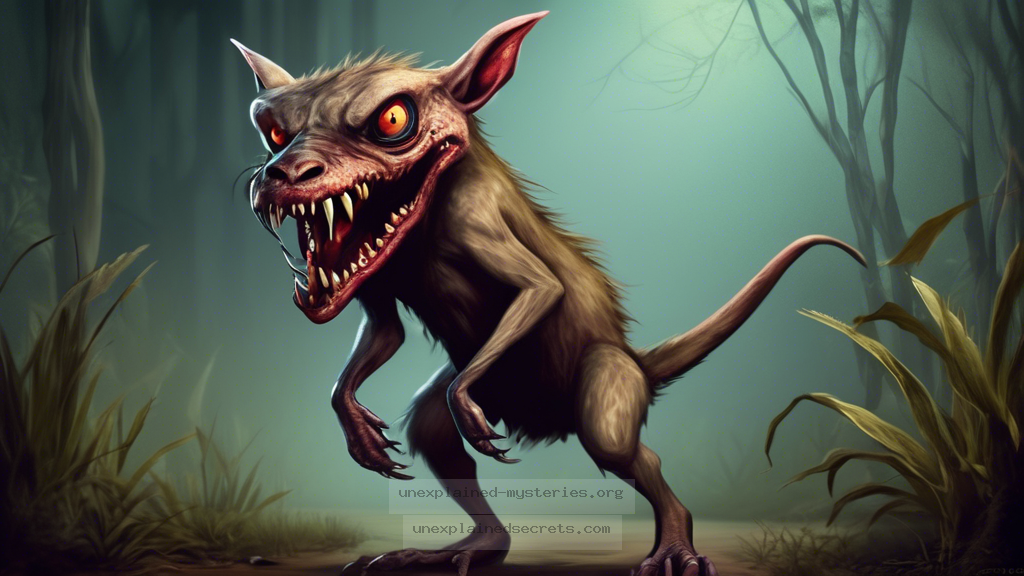Could the Chupacabra Be a Real Creature or Just a Product of Folklore?
Could the Chupacabra Be a Real Creature or Just a Product of Folklore?
The Chupacabra, a name that translates to “goat-sucker” in Spanish, has become one of the most infamous cryptids in modern folklore. First reported in Puerto Rico in the 1990s, this creature is said to attack livestock, particularly goats, draining them of blood. The question of whether the Chupacabra is a real creature or merely a myth has captured the imaginations of both believers and skeptics alike. This post will delve into the historical context, core theories, and ongoing investigations surrounding this enigmatic creature, ultimately exploring the implications of its existence in the field of cryptozoology.
The Historical Context of the Chupacabra
The legend of the Chupacabra emerged in the mid-1990s when a series of livestock killings in Puerto Rico were attributed to this mysterious creature. Eyewitness accounts describe the Chupacabra as a small, reptilian creature with spikes or quills along its back, glowing red eyes, and sharp teeth. The initial sightings sparked widespread media attention, leading to a cultural phenomenon that extended beyond the island to various parts of Latin America and even the United States.
In the years following the first reports, many claimed to have encountered the Chupacabra. The creature’s notoriety grew, with various interpretations appearing in folklore, art, and popular media. This cultural phenomenon reflects deeper societal fears and anxieties about the unknown, making the Chupacabra not just a creature of the night but also a symbol of larger existential concerns.
Core Concepts and Theories Surrounding the Chupacabra
Several theories have been proposed regarding the nature of the Chupacabra. Some suggest it is a previously undiscovered species, while others argue it may be a misidentified animal suffering from disease, such as mange, which can cause hair loss and a gaunt appearance. Here are some prevailing theories:
- Unidentified Species: Some cryptozoologists believe the Chupacabra is a real, undiscovered species of predator that has adapted to hunting livestock.
- Mange-Affected Animals: Many reported Chupacabra sightings have been attributed to canines, such as coyotes or dogs, suffering from mange, which can cause them to appear strange and aggressive.
- Folklore and Collective Psychology: Others argue that the Chupacabra is a manifestation of collective fears and anxieties, reflecting societal issues such as economic hardship and environmental changes.
Documented Cases and Eyewitness Accounts
Several documented cases of Chupacabra sightings have surfaced over the years, each contributing to the legend’s complexity. One notable case occurred in 1995 in Puerto Rico when eight sheep were found dead, each drained of blood. Eyewitnesses described seeing a creature that resembled a small dinosaur, igniting media frenzy and public intrigue.
Another significant incident took place in 2000 in the town of Canóvanas, Puerto Rico, where over 150 animals were reported dead under similar mysterious circumstances. Local authorities were baffled, and the phenomenon caught international attention, further entrenching the Chupacabra in popular culture.
Scientific Investigations and Practical Implications
Despite the sensationalism surrounding the Chupacabra, scientific investigations have sought to demystify the legend. In 2009, a team of researchers from the University of Puerto Rico conducted a study on livestock deaths attributed to the Chupacabra. Their findings indicated that many of these incidents were the result of domestic animals attacking livestock rather than a new creature.
| Year | Location | Details of the Incident |
|---|---|---|
| 1995 | Puerto Rico | Eight sheep found dead, each drained of blood, with eyewitness descriptions of a reptilian creature. |
| 2000 | Canóvanas, Puerto Rico | Over 150 animals reported dead under mysterious circumstances, leading to panic and speculation. |
Alternative Perspectives on the Chupacabra Phenomenon
In exploring the mystery of the Chupacabra, it’s essential to consider alternative perspectives that challenge the notion of its existence. Skeptics often argue that the Chupacabra is a cultural construct, embedded in local folklore and exacerbated by media sensationalism. They contend that the fear surrounding livestock losses can lead to exaggerated claims and misidentifications of more mundane animals.
Moreover, the phenomenon may serve as an allegory for human struggles, such as economic stress or environmental degradation. In this view, the Chupacabra is less about a physical creature and more about a societal narrative that reflects our deepest fears and uncertainties.
Common Misconceptions and Clarifications
Many misconceptions surround the Chupacabra, often fueled by sensational media portrayals. One common misconception is that all sightings describe the same creature. In reality, descriptions vary markedly, with some witnesses describing a dog-like creature, while others insist on a reptilian form.
Another misconception is that the Chupacabra is solely a Puerto Rican phenomenon. While it originated there, reports of similar creatures have surfaced in various countries, including Mexico and the United States, indicating a broader cultural significance rather than a singular, localized entity.
Best Practices for Investigating Cryptids
For those intrigued by the study of cryptids like the Chupacabra, it’s vital to approach investigations with a rigorous methodology. Here are some best practices:
- Gather Eyewitness Accounts: Collect multiple eyewitness testimonies to identify commonalities and discrepancies.
- Document Evidence: Use photographic and video evidence when possible, ensuring proper context and conditions of capture.
- Consult Experts: Engage with zoologists, ecologists, and anthropologists to provide an informed perspective on sightings.
- Maintain Skepticism: Always question sensational claims and focus on scientific validation.
Future Developments and Ongoing Research
As cryptozoology continues to evolve, the Chupacabra remains a focal point for research and exploration. Ongoing studies aim to analyze genetic material from alleged Chupacabra remains, seeking to identify their origins. Additionally, advancements in technology, such as drones and wildlife cameras, may provide new insights into elusive creatures, potentially shedding light on the Chupacabra mystery.
Furthermore, the intersection of folklore and science presents an opportunity for interdisciplinary collaboration, enhancing our understanding of how myths shape human experience and vice versa. As researchers delve deeper, the Chupacabra may serve as a case study for exploring the broader implications of cryptozoological investigations.
Conclusion: The Chupacabra’s Place in Cryptozoology
The Chupacabra stands as a compelling mystery within the field of cryptozoology, encapsulating the complexities of folklore, culture, and human psychology. Whether viewed as a genuine creature, a misidentified animal, or a manifestation of deeper societal fears, the legend of the Chupacabra continues to provoke thought and discussion. As investigations evolve and our understanding of the natural world deepens, the Chupacabra will likely remain a symbol of our collective curiosity about the unknown.
Other Articles
Recent Posts
- What Happened to Flight MH370? The Conspiracy Theories That Still Haunt Us
- What Secrets Lurk Within the Walls of the Infamous Trans-Allegheny Lunatic Asylum?
- What Evidence Supports the Existence of Bigfoot in the Pacific Northwest?
- What Happened to the Indus Valley Civilization? Unraveling the Mysteries of Ancient Urban Life
- Can Telepathy Be Scientifically Proven Through Laboratory Evidence?







